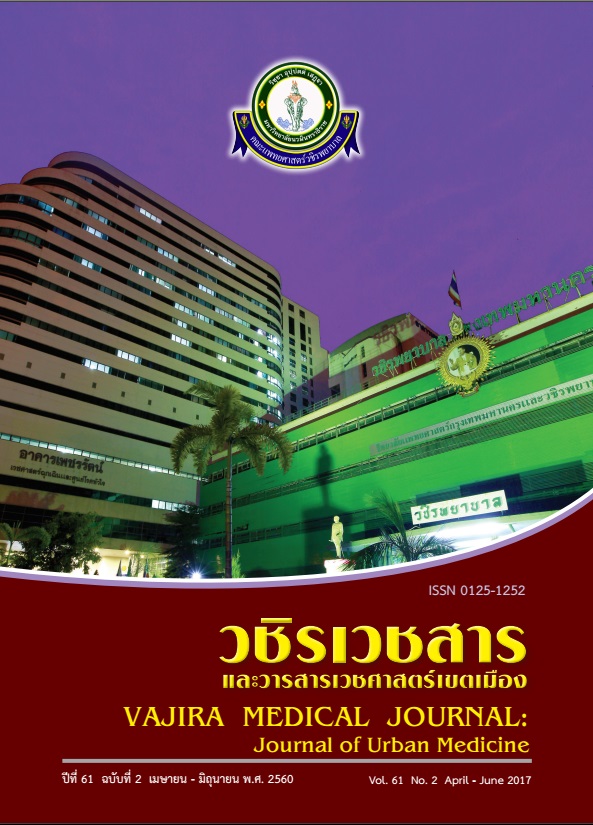Effect of Mass Casualty Education before Mass Casualty Management Training Plan for Register Nurses at Bangkok Metropolitan Administration General Hospital
Main Article Content
Abstract
Objective: To evaluate knowledge and satisfaction of mass casualty management training using a quasi-experimental research approach.
Method: The participants of this study included 58 head nurses, heads of nursing units and other registered nurses designated in the plan. The study was divided into 2 phases: phase 1, education and training were provided before mass casualty management training plan, and phase 2, mass casualty management exercise attended by 15 registered nurses designated in the plan. The questionnaire was composed of 3 parts; (1) knowledge questionnaire (2) practice questionnaire and (3) workshop satisfaction questionnaire. The data was analyzed by frequency, percentage, mean standard deviation and dependent t-test.
Results: Mean knowledge score after the training was statistically significantly higher than that before the training (13.5 vs 11.3; p < 0.01) The overall satisfaction of mass casualty management practice and the workshop was at a high level.
Conclusion: Registered nurses who had education before a mass casualty management training plan were more knowledgeable and were more effective in managing mass casualty.
Downloads
Article Details
References
2. โรงพยาบาลกลาง, ฝ่ายวิชาการ. สถิติหน่วยงานอุบัติเหตุและฉุกเฉิน 2553 - 2559. งานเวชระเบียนและสถิติ. กรุงเทพฯ: โรงพยาบาลกลาง.
3. บุญใจ ศรีสถิตย์นรากูร. การพัฒนาและตรวจสอบคุณภาพเครื่องมือวิจัย : คุณสมบัติการวัดเชิงจิตวิทยา. กรุงเทพฯ: โรงพิมพ์แห่งจุฬาลงกรณ์มหาวิทยาลัย; 2555.
4. Sirikulsathian P, Yutthanatjinda L. The Development of Perioperative Nursing System for Emergency Save Life Patients Cause by Mass Casualty in Operating Theatre Department, Rajavithi Hospital. J Dep Med Service. 2015; 40:92-104.
5. Ahn C, Lim T. Emergency medical service in disaster. Hanyang Med Rev. 2015; 35:136-40.
6. Ingrassia PL, Ragazzoni L, Carenzo L Colombo D, Gallardo AR, Corte FD. Virtual reality and live simulation: a comparison between two simulation tools for assessing mass casualty triage skills. Eur J Emerg Med. 2015; 2:121-7.
7. Zinan N, Puia D, Kinsley T. Result of a mass casualty incident simulation in an undergraduate nursing program. J Nurs Educ Pract. 2015; 12:71-8.
8. Claudius I, Kaji A, Santillanes G, Cicero M, Donofrio JJ, Gausche-Hill M, et al. Comparison of computerized patients versus live moulaged actors for a mass casualty drill. Prehosp Disaster Med. 2015; 30(5) :438-42.


